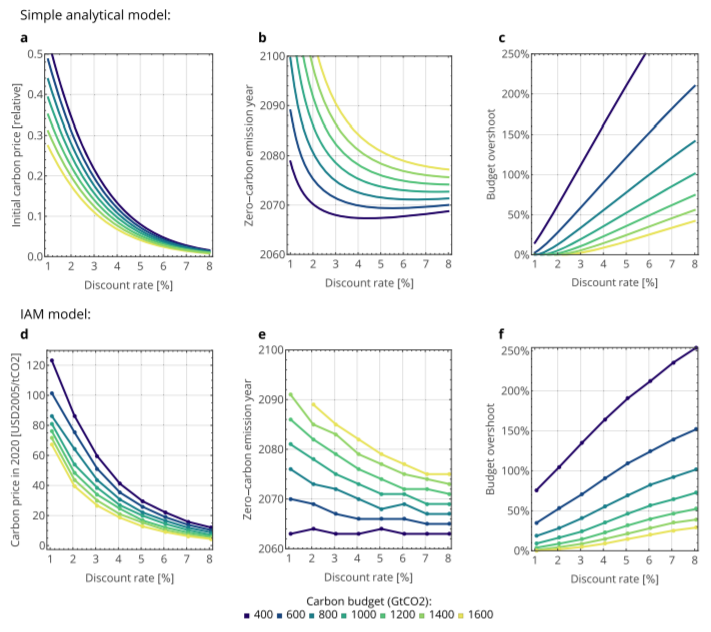The role of the discount rate for emission pathways and negative emissions

The importance of the discount rate in cost-benefit analysis of long term problems, such as climate change, has been widely acknowledged. However, the choice of the discount rate is hardly discussed when translating policy targets—such as 1.5 °C and 2 °C–into emission reduction strategies with the possibility of overshoot. Integrated assessment models (IAMs) have quantified the sensitivity of low carbon pathways to a series of factors, including economic and population growth, national and international climate policies, and the availability of low carbon technologies, including negative emissions. In this paper we show how and to what extent emission pathways are also influenced by the discount rate. Using both an analytical and a numerical IAM, we demonstrate how discounting affects key mitigation indicators, such as the time when net global emissions reach zero, the amount of carbon budget overshoot, and the carbon price profile. To ensure inter-generational equity and be coherent with cost-benefit analysis normative choices, we suggest that IAMs should use lower discount rates than the ones currently adopted. For a 1000 GtCO2 carbon budget, reducing the discount rate from 5% to 2% would more than double today’s carbon price (from 21 to 55 $/tCO2) and more than halve the carbon budget overshoot (from 46% to 16%), corresponding to a reduction of about 300 GtCO2 of net negative emissions over the century.
Link to the article: https://doi.org/10.1088/1748-9326/ab3cc9


Recent Comments